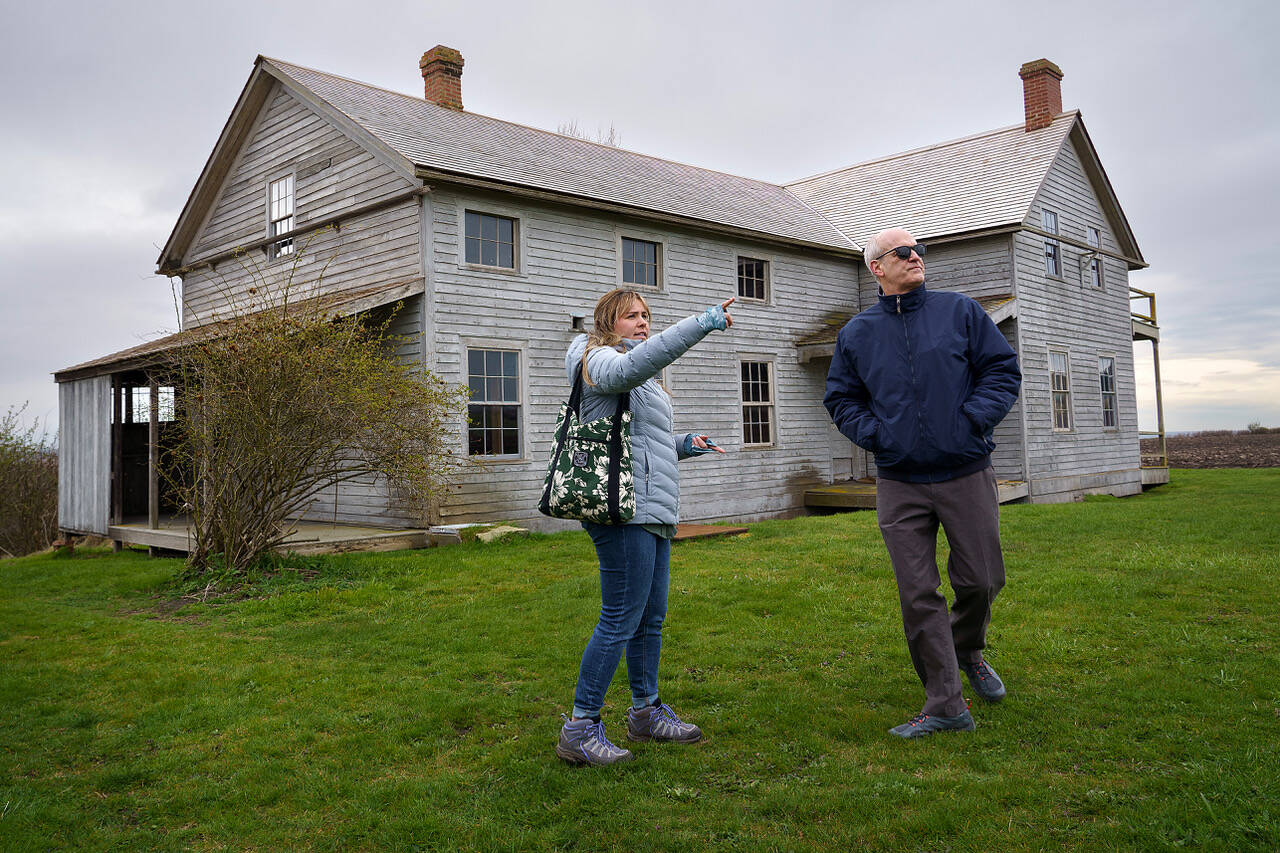The pervasive roar of jet noise led to the restoration of one of the most historic properties on Whidbey Island.
On Thursday, U.S. Rep. Rick Larsen visited the historic Coupeville Ferry House, a location of great public interest on Central Whidbey and the site of major ongoing preservation projects funded by the Navy.
The Navy granted the National Park Service $867,000 in 2019 to restore the Ferry House following recommendations from the Advisory Council on Historic Preservation regarding the impact of EA-18G Growler aircraft on historic properties.
This jet noise mitigation money was put toward some critical preservation measures for the 160-year-old structure. Ebey’s Landing National Historical Reserve manager Marie Shimada said the first order of business was to replace the roof to provide some protection from the elements. The roof replacement was completed last summer.
Now, the National Park Service is in the process of securing contracts to install security and fire suppression systems, Shimada said. The Park Service also received an additional $20,000, which it will transfer to the reserve, for military interpretation at the site.
The Ferry House is a landmark on Central Whidbey, which is the ancestral homeland of the Lower Skagit tribe. Winfield Scott Ebey built the house, which first served as an inn, around 1860 to support the orphaned children of his brother, Isaac Ebey, who was killed by members of the Kake indigenous tribe of Southern Alaska in 1857 in retaliation for the murder of 27 tribal members by the U.S. military the previous year. Isaac Ebey established Whidbey Island’s first Donation Land Claim on what is now the reserve.
Ownership of the property stayed within two prominent island families, the Ebeys and the Pratts, for 14 decades until it was acquired by the Nature Conservancy and eventually the National Park Service. It has not served as a full-time private residence since the 1930s, though military personnel did use the house for lodging during World War II.
The house has stood vacant for decades now, though the adjacent Ebey Road Farm is still active. Wheat, barley and beet seed are all grown on the farm, which produces flour for the Little Red Hen Bakery. The bakery in turn supplies many local restaurants and the Coupeville School District.
Larsen said he is amazed the house, one of the oldest residential buildings in Washington, is still standing after so many years.
“I’m glad (Ebey’s Landing National Historical Reserve) is here to help preserve what is part of the past of Whidbey Island,” he said, adding that he is grateful for the efforts of reserve staff to highlight tribal history as an important part of the island’s story.
Opportunities for the public to tour the property have been few and far between. Public tours drew crowds in 2016 and 2010, which were some of the only opportunities apart from private tours for community members to take a look inside the local landmark.
This summer, Shimada said, the house will serve as one of many locations where the reserve will hold pop-up lectures in advance of its Ebey’s Forever conference this November. Shimada said reserve docents will share a lecture on the property’s history from the house’s front porch at a future date this year.
Further restoration projects may be forthcoming in the future, though nothing has been set in stone; Shimada said reserve and parks personnel are still in the ideation stage regarding how the property could best be preserved and utilized.



